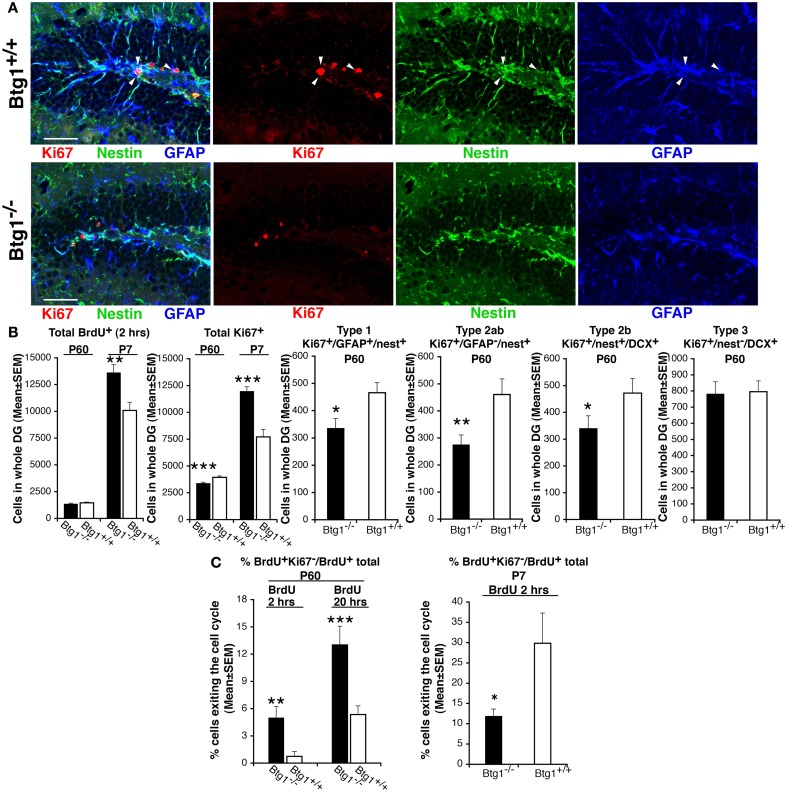Figure 4.
In Btg1-null adult mice the number of cycling dentate gyrus progenitor cells decreases, after a transient early post-natal increase. (A) Representative confocal images in P60 dentate gyrus Btg1-null mice showing a decrease of dividing stem cells, identified by means of Ki67 (type-1; Ki67+/nestin+/GFAP+, red, green, and blue, respectively, indicated by white arrowheads; scale bar, 50 μm). (B) The quantification of the total number of dentate gyrus cells entering the S phase (total BrdU+ cells after a 2-h pulse) did not show significant differences at P60, whereas at P7 their number increased significantly in Btg1-null mice. Similarly, the total number of cycling cells (total Ki67+) increased at P7, but decreased significantly at P60; such a decrease occurred in dividing type-1 (Ki67+/GFAP+/nestin+), type-2ab (Ki67+/GFAP−/nestin+) and type-2b (Ki67+/nestin+/DCX+) progenitor cells, while type-3 (Ki67+/nestin−/DCX+) did not differ. Cell numbers in the dentate gyrus are mean ± SEM of the analysis of three animals per group. (C) Percentage of cells exiting the cell cycle (ratio between BrdU+/Ki67− and total BrdU+ progenitor cells; n = 3 mice) after a BrdU pulse of 2 hours or of 20 h. *p < 0.05, **p < 0.01, or ***p < 0.001 vs. Btg1+/+ dentate gyrus; Student’s t test.

